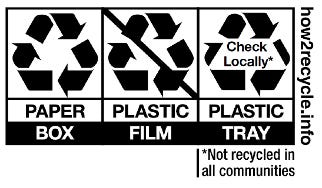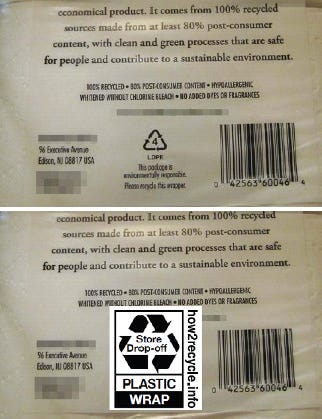January 30, 2014

How2recycle label
Sustainability nonprofit GreenBlue has released a new report, "Labeling for Package Recovery," and announced details for a 2012 national pilot of the new Packaging Recovery Label System, a voluntary label developed by the organization's Sustainable Packaging Coalition (SPC) to communicate to consumers how to recycle a package after its use.
The following leading companies have agreed to implement the label on select packaging nationwide starting in 2012: ConAgra Foods, Costco Wholesale, Microsoft, REI and Seventh Generation.
The goals of the labeling system are to reduce confusion for consumers with clear instructions on how to recycle a package after its use, and to develop a consistent, accurate labeling system for companies that adheres to the Federal Trade Commission (FTC) "Green Guides" and uses nationally accurate recyclability data.
"Consumers are faced with a confusing landscape of recycling messages and instructions that are often inconsistent or misleading," says GreenBlue project manager Anne Bedarf, who has led development of the labeling system for the SPC. "We believe this label will create a harmonized system that will help consumers and companies contribute to more effective resource recovery."
Given that recycling systems vary significantly by municipality across the country, each package component is labeled as widely recycled, not yet recycled, or limited recycling with instructions for consumers on how to check locally. The system was based on the successful OPRL system in the UK and developed through over three years of research, including extensive consumer testing and a national effort to collect updated recyclability data.
GreenBlue has launched a website for consumers as part of the labeling system: www.how2recycle.info, which provides information on how to check locally, as well as information for local governments and companies interested in getting involved. Following the conclusion of the pilot phase, the label will be available to any interested companies to use.
The labeling system has received support from numerous state and local governments addressing recycling challenges. "We strongly believe that recycling programs across the country and the general public's commitment to recycling behavior will greatly benefit from a clear and sensible package labeling framework," says Scott Mouw of the North Carolina Department of Environment and Natural Resources, noting the support of the state for the effort.
GreenBlue also released its new Labeling for Package Recovery report, which details the current challenges with inconsistent and misleading labels on packages, evaluates two international packaging recovery labeling systems, and discusses how an effective labeling scheme could address shortcomings of the U.S. recycling and recovery system.
The report presents requirements for an effective labeling scheme, where the label should:
Match its stated objective
Be actively administered and enforced nationwide
Be easily recognized by consumers
Have the ability to drive positive action
Be easily adaptable to new packaging material types, formats, and recovery systems
GreenBlue's Sustainable Packaging Coalition developed its comprehensive Packaging Recovery Label System specifically to meet these requirements for the U.S.
"We believe this report outlines how an effective labeling scheme will prompt consumers nationwide to take the correct action and significantly increase collection and recovery of packaging materials," says GreenBlue project manager Liz Shoch, the author of the report.
The Labeling for Package Recovery report is available free to download at: www.greenblue.org/publications
Source: GreenBlue's Sustainable Packaging Coalition
Example of a label Before and After:
How2recycle package
.
About the Author(s)
You May Also Like


